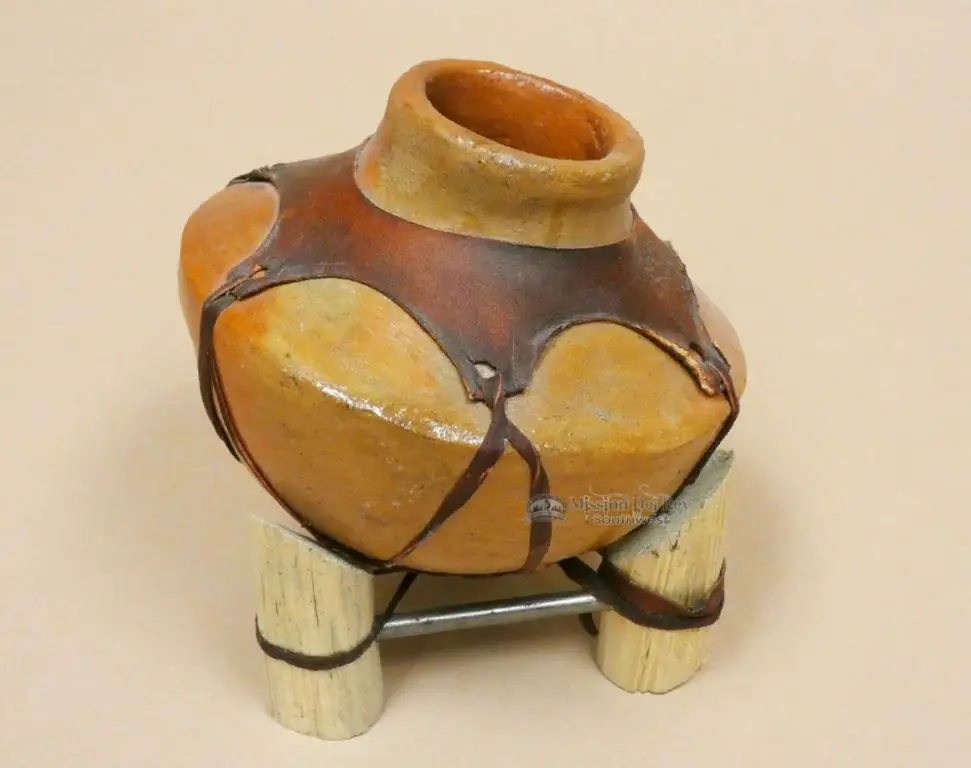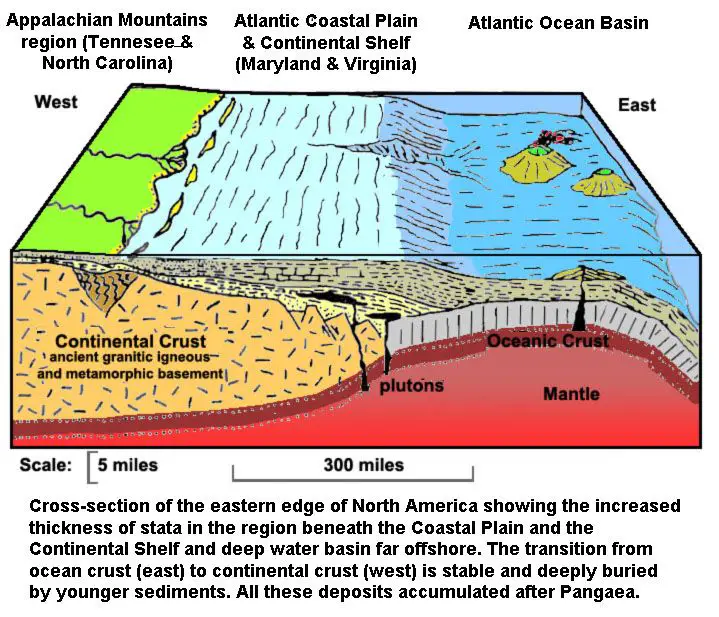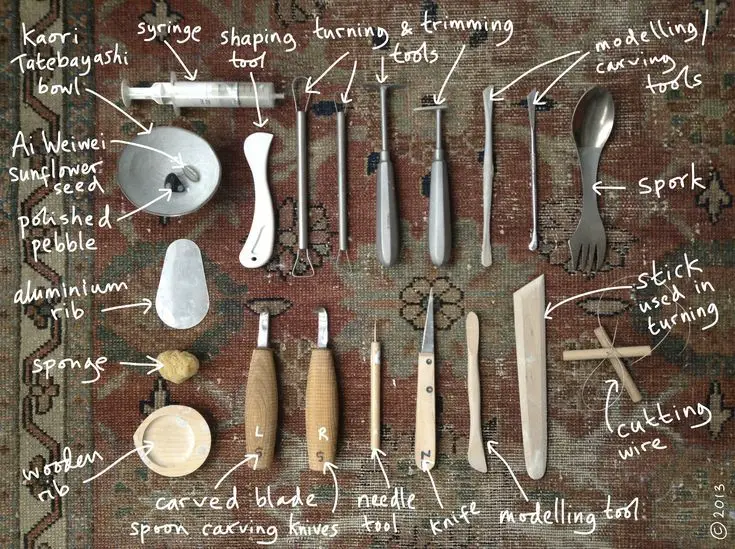Is There Clay In New York?
Clay is a fine-grained natural material that is found in soil. It is formed by the weathering and decomposition of rocks like granite and then transported by water or wind to various deposits (Miller et al., 1977). Clay particles are typically less than 2 microns in size. The composition of clay varies but commonly contains variable amounts of silica, alumina, and water. New York has many important clay deposits across the state with unique properties that make them useful for various applications. This article will provide an overview of the major clay deposits in New York, the uses and history of New York clays, and notable clay artists and events within the state.
NY clay deposits range from residual clays formed directly on bedrock to transported glacial deposits laid down in the last Ice Age. The extensive clay layers in central NY are marine clays deposited in ancient seas, while clays mined in the Hudson Valley today formed from metamorphic rocks like schists and phyllites. The exceptional diversity of NY clays provides ideal properties for products ranging from bricks, ceramics, cement, cosmetics, and kitty litter.
(Miller, G. A., Gorsline, D. S., & Wadsworth, F. B. (1977). Seawater-derived brines in Paleozoic sedimentary basins of the Northeastern United States. Geol Soc Amer Bull, 88(7), 1025-1032)
Clay Formation
Clay minerals most commonly form by prolonged chemical weathering of silicate-bearing rocks. They can also form locally from hydrothermal activity. Chemical weathering that produces clay minerals often involves flowing surface water or groundwater, but may also occur in environments with minimal moisture, such as deserts. The precursor silicate rocks have a very wide range of composition, and inclusions of other materials are common. While most clay minerals are composed largely of silicon, oxygen and aluminum, some clays contain substantial amounts of iron, magnesium, potassium, sodium and calcium. The crystal structure of each clay mineral determines its specific properties and uses. (https://en.wikipedia.org/wiki/Clay)
Most clay minerals form where rocks are in contact with water, air, or steam. Examples of these situations include weathering boulders on a hillside, ancient stream deposits buried below ground, or hydrothermal alteration around hot springs. Clay minerals continue to form in soils today in similar situations. (https://pubs.usgs.gov/info/clays/)
Major Clay Deposits
New York State has abundant clay deposits, especially in the Hudson Valley region where glacial lakes left behind thick clay sediments during the end of the last Ice Age. According to the New York State Museum, the Hudson River lake clays can reach up to 60 feet in thickness and underlie approximately 1,000 square miles of land.
Some of the most significant clay deposits are found along the Hudson River between Kingston and Albany, where the clay can be over 100 feet thick in some areas. The predominant clay minerals are illite and montmorillonite. The Capital District around Albany contains especially abundant clays from ancient glacial Lake Albany.
In central New York, the Cicero Clay Pits produced clay suitable for making bricks and pottery for over 100 years before closing in the late 20th century. According to a study, the clays found there date back to the Late Devonian period over 350 million years ago.
The abundant clay deposits across New York provided an important natural resource that helped drive the state’s brick, pottery, and tile industries from the 19th century onwards.
Uses of NY Clay
Clay has been an important resource in New York since pre-colonial times. Native Americans used local clays for making pottery, clay pipes, gaming discs, cooking balls and ornaments (Source). Today, clay remains a valuable economic resource in the state.

The clay mining industry in New York employs over 2,000 people across the state. Major uses of New York clay include:
- Brick manufacturing – New York clay deposits are ideal for making bricks and pavers. There are over 15 brick manufacturing plants in the state.
- Ceramic products – Local potters and ceramic artists utilize the high-quality clays. New York clay is excellent for making tableware, pottery and decorative items.
- Tile manufacturing – Clay tiles for floors and walls utilize clays mined across New York.
- Cement and concrete production – Kaolin clays are added to cement and concrete to improve workability and strength.
- Wastewater treatment – Bentonite clay is used to line ponds and landfills to prevent groundwater contamination.
- Drilling – Bentonite clays help lubricate drill bits and maintain the walls of boreholes.
New York’s readily available clay deposits support many manufacturing and construction jobs across the state while supplying materials for local artists and crafters.
Famous NY Clay Products
New York has a rich history of clay products dating back to early Native American pottery and continuing today with modern ceramic artists. Some of the most notable clay products to come from New York include:
New York Stoneware – This pottery studio located in Manhattan creates beautiful hand-thrown tableware using native New York clays. Their pottery combines functional designs with artistic flair.
Zanesville, Ohio is known as the “Pottery Capital of the World,” but much of the clay used by Zanesville potters came from New York. Roseville Pottery and Weller Pottery were two prominent Zanesville potteries that relied on New York clays.
The pale cream-colored clay from Albany, NY was ideal for making porcelain and was shipped to potteries around the country. It was used by renowned makers like Lenox and Onondaga Pottery.
Bricks made from clays like the dark red shade found near Catskill, NY were used to build historic sites like the Brooklyn Bridge and the Empire State Building.
Jono Pandolfi creates contemporary ceramic tableware by hand in his Brooklyn studio using native clays. His minimalist designs are highly sought after by chefs and design aficionados.
New York clays continue to be valued for their unique colors, textures, and workability allowing artisans to shape stunning pottery, tiles, and sculpture.
Clay Mining
Clay mining has a long history in New York State. In the 19th century, kaolin clay was extensively mined in the area that is now Clay Pit Ponds State Park Preserve on Staten Island. The abandoned clay pits eventually filled with rainwater and now serve as ponds and wetlands for wildlife.
Most clay mining in New York today focuses on the extraction of glacial lake clay. Heavy machinery is used to remove the overburden of soil and rock to access the clay deposits underneath. The clay is then loaded onto trucks and transported to processing facilities.
Clay mining can have environmental impacts such as land disturbance, habitat loss, air and noise pollution, and visual impacts on the landscape. Responsible mining practices aim to mitigate these impacts through reclamation and restoration. Strict permitting and regulations govern clay mining operations in New York.
Clay Festivals & Events
New York hosts a variety of popular clay festivals and events that celebrate the art of pottery and ceramics. One of the most notable is the Western New York Pottery Festival held annually in East Avon. This 2-day event features over 20 professional clay artists displaying and selling their work. Attendees can participate in free hands-on clay workshops and watch live clay wheel throwing and handbuilding demonstrations. There is also a clay Olympics competition with pottery contests for both kids and adults.
Another popular festival is the WNY Pottery Festival held in East Avon, NY every June. This all clay festival invites talented potters from across the region to exhibit and sell their wares. Fun contests like the clay Olympics encourages participation from all ages.
Throughout the state, many colleges, studios, and galleries also host seasonal clay sales and open studio events. These showcase functional pottery, ceramic sculpture, and other clay art forms. Some locations also offer make-your-own pottery studios for the public to get hands-on clay working experience.
Notable Clay Artists
New York is home to some of the most innovative and renowned clay artists in the world. Here are profiles of a few leading artists working with clay in New York:
Donna Green is known for her colorful and playful porcelain vessels. Her work draws inspiration from nature, architecture, and decorative arts. Green often incorporates bold patterns and vivid colors in her decorative pottery and sculpture. She has exhibited widely across New York City. (https://www.ceramicsnow.org/tagged/new-york/)
Betty Woodman (1930-2018) was an American ceramic artist who pushed the boundaries of clay and glaze techniques. She helped elevate ceramic art to the same esteem as painting or sculpture. Woodman split her time between New York and Italy, and her work reflects a dialogue between the two cultures. She is known for her colorful, abstract, and exuberant ceramic vessels and wall pieces. (https://www.nytimes.com/2022/10/22/arts/design/betty-woodman-ceramics-artist.html)
Roberto Lugo is a contemporary ceramic artist based in New York who combines porcelain, social activism, hip hop culture, and history in his work. His porcelain vases feature portraits of hip hop icons and explore themes of social justice. Lugo aims to uplift people of color through his imaginative ceramic artworks. (https://www.artsy.net/article/artsy-editorial-20-artists-shaping-future-ceramics)
Clay Museums & Galleries
There are several notable museums and galleries in New York that feature and showcase clay artworks and artifacts. The Museum of Ceramic Art – New York (MoCA/NY) in midtown Manhattan is dedicated to advancing the appreciation and understanding of ceramics. Their permanent collection includes over 800 works in clay and they regularly hold special exhibitions highlighting ceramic artists.
The world-renowned Frick Collection on the Upper East Side also has an impressive collection of porcelain and pottery. While not exclusively focused on clay works, they have pieces dating back thousands of years from China, Korea, and Japan as well as 18th century porcelain from Europe. Their collection allows visitors to trace the history and evolution of ceramic arts.
Major galleries like Sotheby’s and Christie’s in New York will also occasionally hold exhibitions and auctions dedicated to important ceramic works, both historic and contemporary. These special events are an opportunity to see rare masterworks in clay.
Conclusion
In summary, New York has a rich history of clay deposits and clay production. The major clay-producing regions are located in central and western New York, where glacial activity helped form substantial clay deposits. These clay resources have been mined and utilized for centuries to produce bricks, tiles, pottery, porcelain, and other clay products.
Some of the most famous potters and clay artists have called New York home and helped establish the state as an important center for ceramic arts. Events like the Potters Market showcase the work of contemporary clay artists. Museums like the Museum of Ceramic Art provide opportunities for visitors to learn about and appreciate clay creations.
Clay has not only been an important natural resource and material for New York, but has helped shape the state’s culture and identity. The clay traditions and iconic clay products will likely continue to thrive in New York for generations to come.




